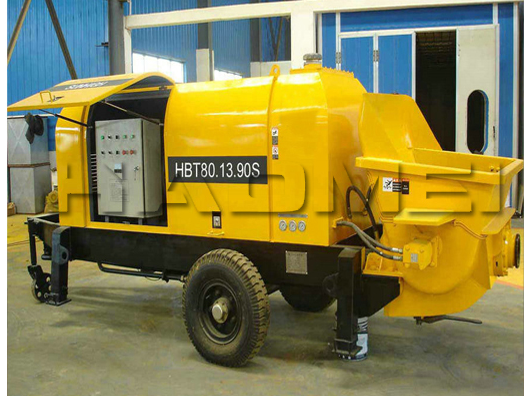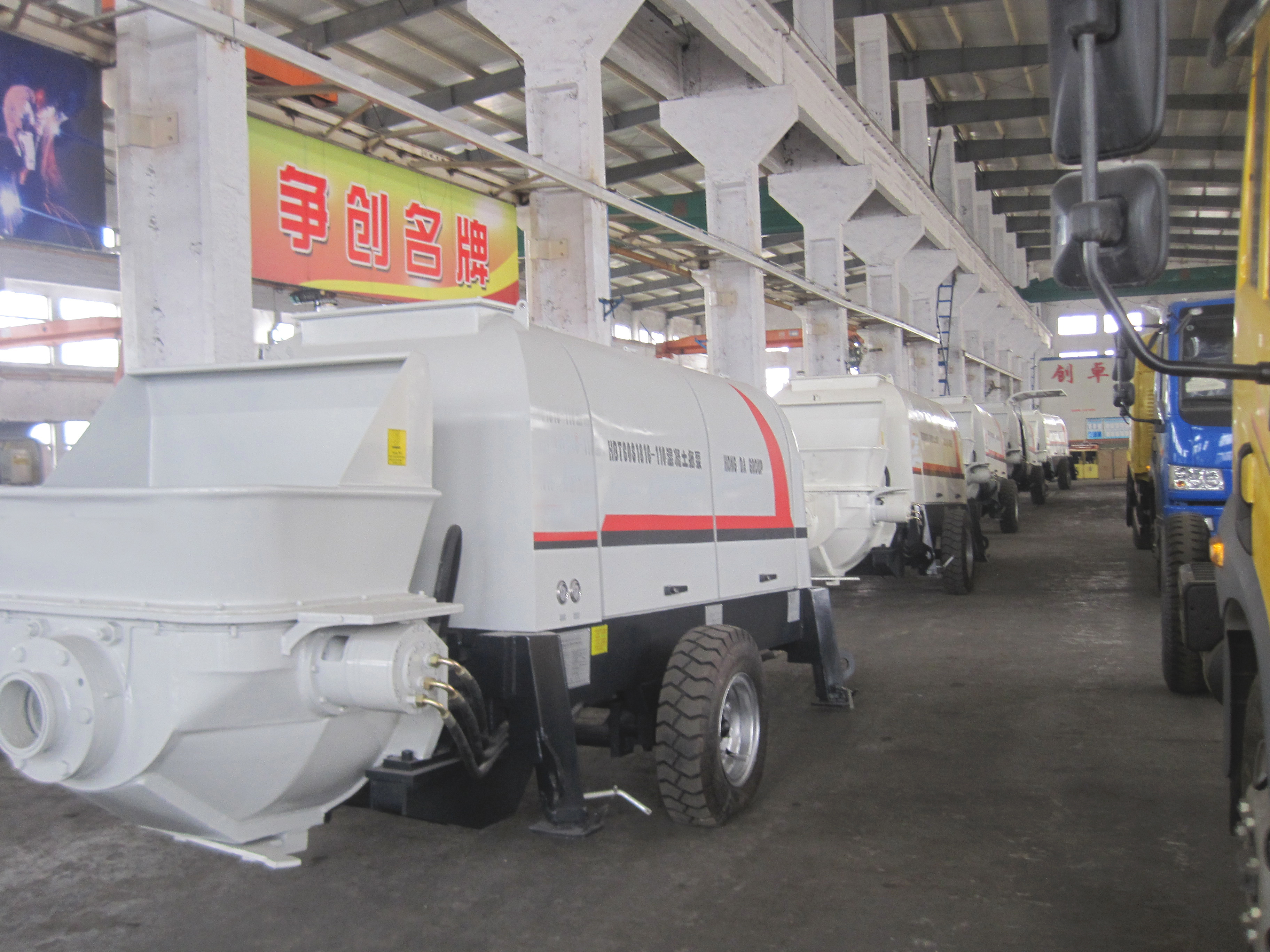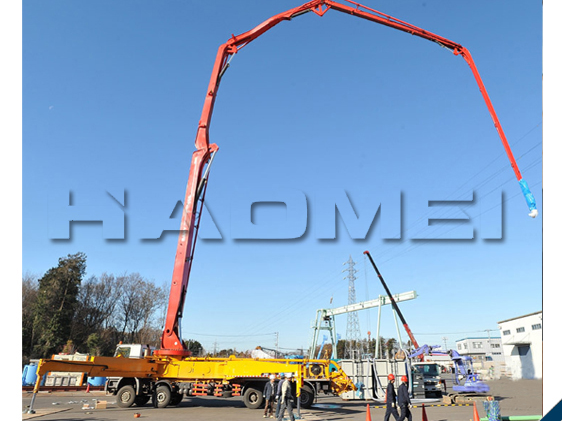
Workplace accidents involving concrete pumping equipment can result in significant injuries, permanent disability, or even death. Concrete pumping accidents can result from:
Mechanical issues
Environmental hazards
Operator carelessness
This guide will provide you with the essential information you and your operators need to identify potential hazards, take the necessary steps to mitigate them, and prevent accidents before they occur.
Inside this guide:
Types of concrete pump safety hazards
Concrete pumping safety precautions
Concrete pump safety tips for operators
The unsung hero of concrete pump safety
Key takeaways
Types of Concrete Pump Safety Hazards
Awareness of the most common concrete pumping hazards is the first step toward working safely. Here are seven of the most common concrete pumping hazards, and some pro tips for overcoming them on the job.
Hose Hazards
Hoses are a central component of concrete pumping systems, so they're also responsible for a large chunk of concrete pumping accidents. Even when not in use, concrete delivery hoses can still contain large amounts of concrete. The largest concrete delivery hoses can weigh up to 376 pounds when filled.
Concrete hose-whipping events occur when compressed air inside the hose causes it to come untethered and whip around violently. If a hose is not correctly constrained, it can go from vertical to horizontal in around 0.3 seconds! This momentum, combined with the heavy weight of its concrete and metal ends, will result in significant injury or even death for anyone it hits.
Pro Tip: Avoid hose-whipping accidents by maintaining a safe physical distance from a hose when air is in the system and make sure the hose doesn’t get too close to anything else in the area.
Power Lines
Power lines in your working environment can present a major hazard. If your concrete pumping machinery comes into contact with a live power line when in use, it can cause severe burns, injuries, or even death for its operators.
Pro Tip: Avoid accidental power-line contact by identifying the locations of any power lines in a work environment beforehand. Power-line stamps are a useful tool on job sheets or in information logs. This helps all of your operators recognize the presence of power lines and avoid them during pumping operations.
Electrical Hazards
In addition to power lines, concrete pump trucks themselves are a common cause of electrical issues on the job site.
Pro Tip: Prevent electrical accidents by performing routine maintenance on each truck’s batteries and electrical system to identify and prevent electrical problems before they occur.
Concrete Burns
While most concrete pump operators are familiar with the dangers of flying debris and moving equipment, not enough realize that they may also be at risk of chemical burns. But liquid concrete can and does cause injury to many concrete operators who don’t follow adequate safety checklists.
Exposure to liquid concrete is a major hazard for all concrete pump operators. When liquid concrete comes in contact with your bare skin, it can cause injuries that range in severity from irritating rashes to major third-degree burns.
Pro Tip: Avoid concrete burns by always wearing appropriate safety gear when operating pumping equipment. Personal protective equipment such as eye protection, gloves, and long-sleeve shirts can also help keep operators safe from concrete burns.
Hydraulic Leaks
A hydraulic leak in your concrete pumping equipment can be a significant risk to all of your operators. When your equipment’s hydraulic system springs a leak, the oil inside can burst out at extremely high speeds, which can damage equipment or the skin of anyone nearby. Operators who suffer a hydraulic leak accident can experience severe burns or even death.
If you experience a hydraulic leak, the first thing to do is stop the leak as soon as possible. Catch as much of the leaking oil as possible, taking care to switch to a new bucket before each bucket fills to the brim. However, the best way to deal with hydraulic leaks is to prevent them from happening in the first place by regularly checking hydraulic equipment for any small damage that could turn into a major leak.
Boom Accidents
Many concrete pumps use boom lifts to carry operators up to the equipment controls or machinery located in high places. But while these lifts are often an essential aspect of the job, they still pose a significant safety hazard to operators who don't follow safety precautions.
Most accidents involving boom lifts occur when operators need to pay more attention to their surrounding area. A boom colliding with another object or structure during the concrete pumping operation can cause major damage or injure anyone nearby.
Pro Tip: Boom lift operators should always look out for potential hazards or obstructions before operating their lifts. Common hazards include power lines, lights, sprinklers, and HVAC systems. Overall, the best way to prevent boom lift accidents is to be “boom aware” at all times, before and during boom lift operations.
Rough Mixes
As concrete mixtures become more complicated, the risk of rough mix accidents becomes more and more likely. These accidents occur when your concrete mix does not have the correct components or proportions for your specific equipment or pumping needs. Not only can these cause damage to your equipment, but rough mixes can also potentially injure your operators during the pumping and maintenance processes.











02 Comments
Lorem ipsum, dolor sit amet consectetur adipisicing elit. Dicta perferendis asperiores voluptatum saepe repellat atque obcaecati dolores nulla, explicabo harum inventore sed corrupti molestiae aspernatur.
Lorem ipsum dolor sit amet consectetur, adipisicing elit. Qui expedita magnam ea tempora consectetur fugit dolorum numquam at obcaecati voluptatibus.
Lorem, ipsum dolor sit amet consectetur adipisicing elit. Error, ipsa dolor exercitationem culpa obcaecati illo veniam voluptatem perferendis hic nisi tempora omnis, mollitia unde doloribus.